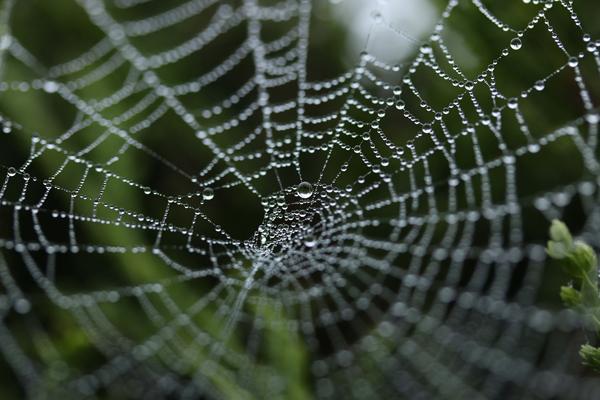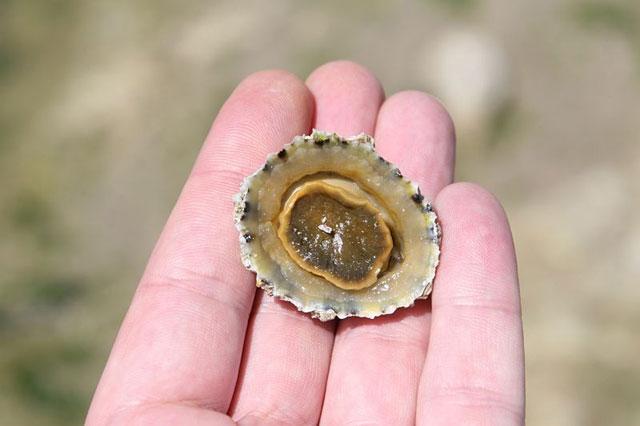You are here
Researchers create synthetic silk that mimics behaviour of spider webbing
By Los Angeles Times (TNS) - May 22,2016 - Last updated at May 22,2016

Photo courtesy of compuvate.com
Scientists have discovered a remarkable property of a certain type of spider silk: It acts like a solid when you stretch it, but liquid when you squish it. And they’ve proven that they understand how this “liquid wire” works by actually creating synthetic strands that can do the exact same thing — solving a decades old mystery in the process.
The findings, described in the Proceedings of the National Academy of Sciences, reveal the bizarre phenomenon that may help spider webs remain taut, and could offer fresh insight for a range of technologies, including soft robotics.
Spiders spin a range of web shapes, from funnels to nests, but the classic orblike structures remain something of an archetype. Such webs typically have sticky droplets of glue on the strands of capture thread — the segments of spider silk that connect the radiating branches of these disclike webs. The glue’s primary function seems pretty clearly to help in the nabbing of an errant, tasty bug — simply part of a fly-catching device that’s been honed over hundreds of millions of years.
“If I was to tell you that [there] lives a creature the size, let’s say, of a small human that makes out of its own body a net the size of a football field to catch a small jet plane in it, you would think I’m totally mad,” said study co-author Fritz Vollrath, an evolutionary biologist at Oxford University. “But that’s in effect what the spider does, if you scale it all up.”
Back in the 1980s, Vollrath noticed something strange in a dried-up glue droplet — the thread seemed to be coiled up inside it. He expected that the droplets might be acting as string storage, but when others tried to replicate the work, they could not, and they decided it must have been a peculiarity of Vollrath’s study.
But senior author Arnaud Antkowiak, a fluid dynamicist at Pierre and Marie Curie University in France, recently came across Vollrath’s paper on spider silk from 1989. Antkowiak has an interest in the ability of a liquid’s surface tension to bend other materials to its proverbial will. But those forces only work at very small scales — on the scale of spider silk, for example.
Tiny though this effect may be, it can have big consequences. For example, premature babies often have problems breathing because the fluid in their lungs has a high-enough surface tension that it can cause tiny airspaces in the lungs to collapse. Doctors have to introduce a surfactant to break up the fluid’s surface tension and help them to breathe.
Intrigued by Vollrath’s decades-old study, Antkowiak and his colleagues teamed up with the biologist to try the experiment using cobweb from living spiders. Herve Elettro, then Ankowiak’s graduate student, spent about a year in the dark of night gathering cobwebs on the banks of the Seine River to study, but with limited success; they were small, and their threads were too thin to see clearly. They had much more luck with golden orb weavers from New Guinea, which are much larger and whose silk turned out to be much easier to pick out on camera when spooled up into a liquid droplet.
“When you compress it by, say, 5 per cent, it remains taut,” Antkowiak said. “When you compress it by 10 per cent it remains taut, as well. And when you keep on pushing — and it’s really funny to see it because it feels like it’s really bizarre — when you keep on pushing, you can go up to 95 per cent compression and it still remains completely taut. So that’s really unusual… it just adapts its length somehow.”
The extra thread, it seems, was spooling inside those droplets of glue, and then unspooling whenever the thread was stretched. The phenomenon only worked at these small scales, however, when the silk was exceedingly thin and subject to the surface tension of the glue.
Think about how weird this is. If you take a ruler and push its ends towards each other, you’ll bend and eventually break it from the compression. And you can stretch a rubber band to maybe a few times its original length, but bringing the ends closer than its resting length will cause it to sag in the middle.
Imagine if, instead of sagging, that rubber band just seemed to shrink shorter and shorter as you brought the ends together — contracting just enough to remain straight.
The researchers were actually able to film the process, but they wanted to make sure that it wasn’t unique to this particular type of spider. So they carefully made the thinnest threads they could — a painstaking process — out of polyurethane and coated them with a silicone oil to mimic the glue droplets and watched what happened. Sure enough, when they brought the ends closer together, their synthetic spider silk winched in, remaining tense even when it should have sagged.
For the spider, this effect could be helpful in keeping its nest neat, preventing neighbouring strands from touching and thus turning this beautiful flycatcher into a sticky, ineffective mess. For humans, the researchers say their discovery of what’s essentially a class of composite materials could inspire and aid the design of a host of technologies, from toxin-catchers to artificial muscles for soft robots.
Related Articles
Spider silk may lose its claim as the strongest known natural material after researchers found that limpet teeth have more mettle.
DAMASCUS, Syria — On a rooftop in Syria's capital, Mohammad Al Rihawi plunges silk threads into emerald green dye, preparing it to be woven
WASHINGTON — A person on a poorly ventilated Chinese bus infected nearly two dozen other passengers with coronavirus even though many weren'


















